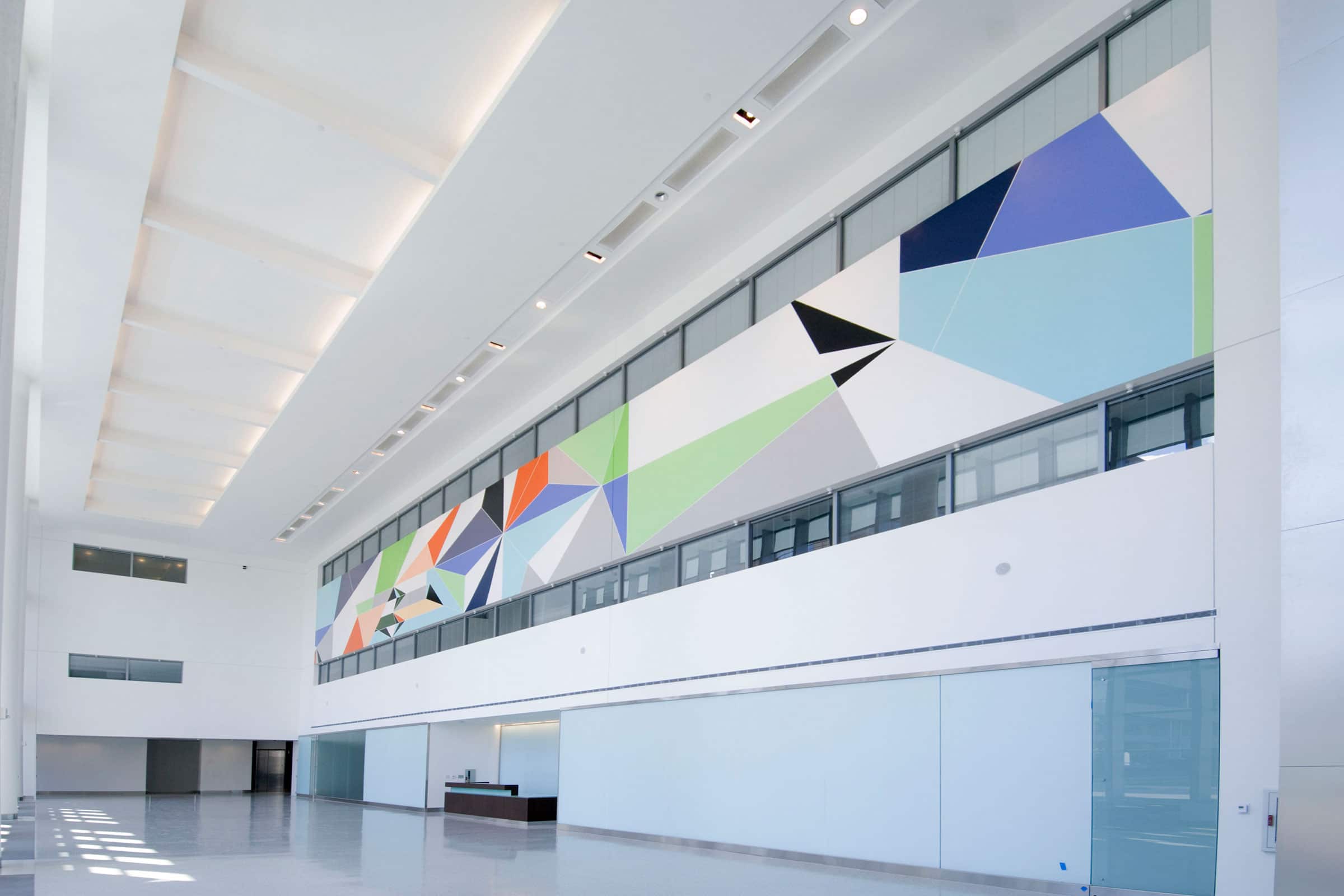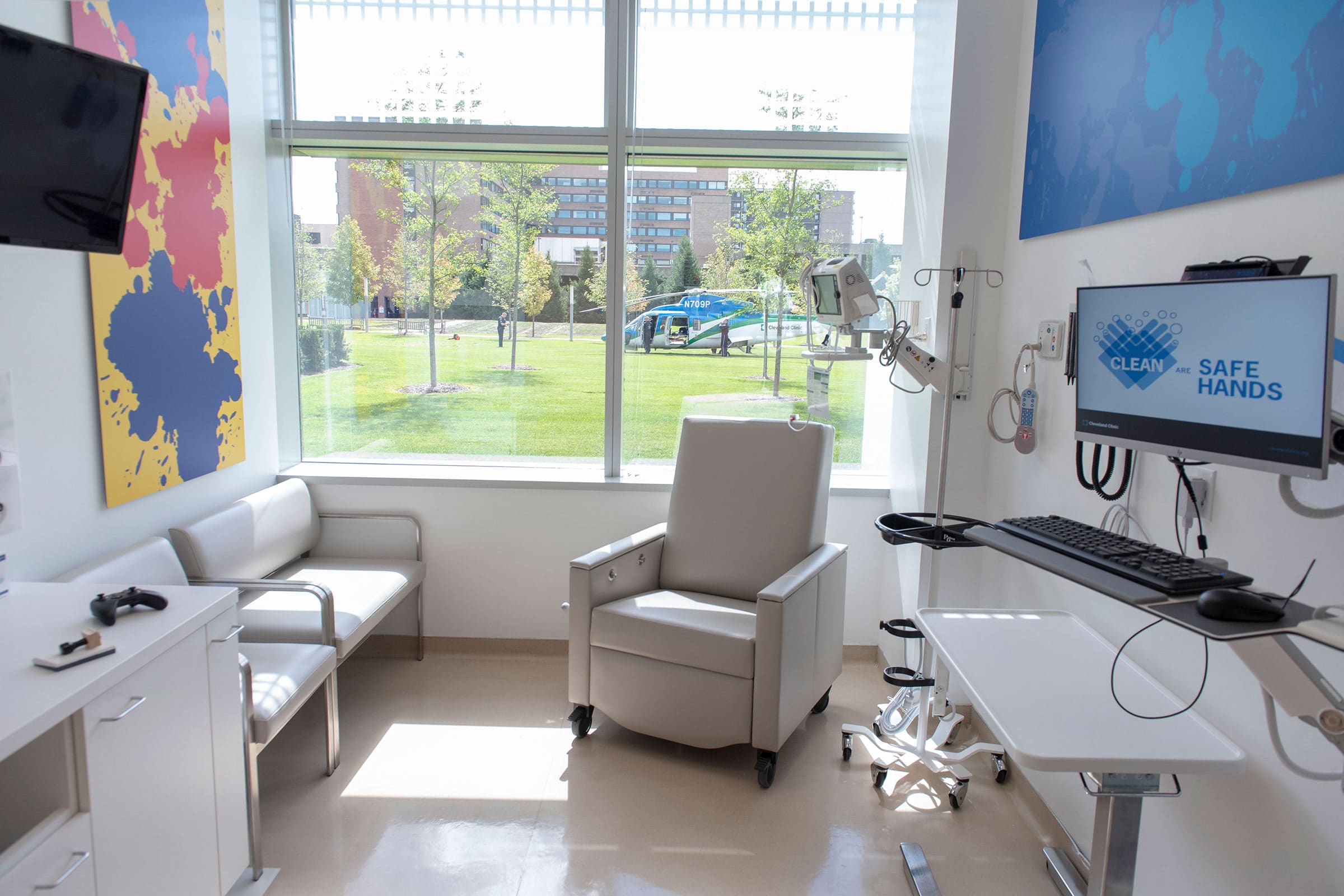It’s often tricky for Chris Connell to explain his work to people who aren’t familiar with health care. As the chief design officer for the Center of Design at Cleveland Clinic, he’s not a doctor, a nurse, or a technician. He’s a designer, and he works on designing everything.
In a health care setting, the need for efficient, safe, and effective spaces is obvious, but what’s less obvious is the need for those spaces to feel just right. “It’s really important for people to feel like they’re not in a facility of some sort, with the sterility that implies, and not feel like they’re being bombarded with contraptions,” Connell says. The ease of use and peace of mind that comes with good patient-centric design reduces stress for everyone in the health care environment and improves outcomes.
So while it’s understandable that most of the design work that goes into health care spaces is focused on functionality, Connell says it’s important to get all the aesthetic details right for people whose outcomes depend on their levels of stress and anxiety. “It isn’t enough to just go in and nail a television to the wall and call that a patient room. We want to try and give it the same thought and care that you would give to your own personal environment.”
The focus, then, is on answering two questions: How do you create a calm, technically proficient environment that is reassuring to patients and their families? And how do you help caregivers perform their jobs without passing stress on to vulnerable patients and other workers? It’s a major balancing act that Cleveland Clinic solves by focusing on simplicity, flexibility, and a holistic approach to problem-solving.
Calm & Elegant
“We try and take away the clutter, and we keep it simple, and clean, and minimal,” Connell says. That means focusing on timeless, relatively neutral approaches with close attention to all important details. From carefully locating the new cancer center to ensure patients have beautiful natural views to custom-making hospital bed headboards that integrate all the necessary equipment into one calming and comforting package, Connell’s design team knows small touches pay off in big ways.
Furthermore, a simple approach to aesthetics helps inspire confidence in patients by lending an air of forward-thinking to the environment. “It’s visibly timeless, and you don’t feel like you’re going into a facility that has a decade to catch up to where we are now. You feel like you’re going somewhere that’s for the future,” he says, noting that in a world struggling with a pandemic, that confidence is more important now than ever.

Art and natural light fill Glickman Tower at Cleveland Clinic. Photo courtesy of Cleveland Clinic
Prepared for the Unpredictable
When Cleveland Clinic was designing a new education facility for medical students, they had no idea they would soon need to use that same building as a surge hospital for COVID-19 patients. Thankfully the team designed that building with flexibility in mind. It was built with raised floors, modular rooms, flexible ceilings, lots of natural light, and a ventilation system that works well in the heightened sensitivity of the new environment. At a bigger scale, the building was intentionally designed to house four schools in one building, positioning them around a flexible-use courtyard that now houses temporary patient beds.
These decisions weren’t made to address specific patient needs—they were made to address the fact that no one can predict exactly what patents will need in the future. However, this kind of forward-thinking is always under threat by the realities of budgets. “Flexibility requires some upfront investment in order for it to pay dividends later, and very often it’s one of the first things to go when people are trying to take costs out of budgets,” Connell says. But because Cleveland Clinic invested in flexibility, they were able to complete the education center’s life-saving transformation in just 14 days.

Cheerful color and light also dominate the design at Cleveland Clinic Children’s, as seen above. Photo courtesy of Cleveland Clinic
Bringing It All Together
Another pillar of Cleveland Clinic’s design approach is holistic thinking. Connell says achieving real balance in design is being able to see functional efficiency, economy, safety, and elegance as elements of the same thing. It’s all good design, and all of it applies to the entire health care environment, “whether it’s the art program, the sustainability of the space, the safety of the materials, the safety of the layouts, or the modes in which people are able to work within those environments,” he says. “By looking at them together, they all strengthen one another.”
And Cleveland Clinic has been thinking holistically for years. Since the ’70s they’ve worked to maintain a consistent master plan across their buildings and campuses, learning from one project to the next and applying those lessons to everything that comes after. So even though the health care industry, in general, is facing all sorts of new challenges, Cleveland Clinic has been successfully putting patients at the center of their wide-ranging, detail-driven design process for years, and they’ll continue to meet the challenges of the future head-on.

Photo courtesy of Cleveland Clinic


